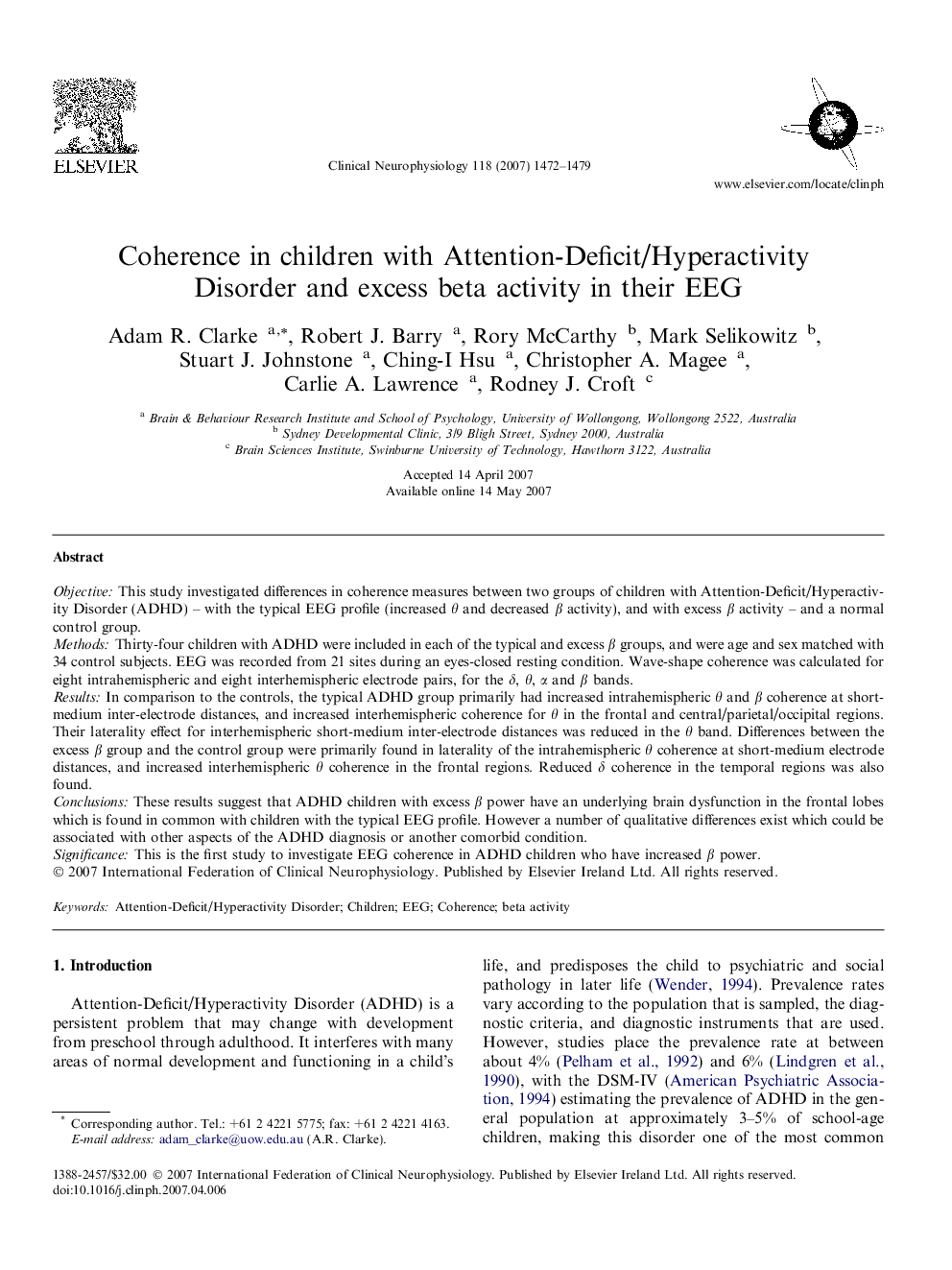| Article ID | Journal | Published Year | Pages | File Type |
|---|---|---|---|---|
| 3047620 | Clinical Neurophysiology | 2007 | 8 Pages |
ObjectiveThis study investigated differences in coherence measures between two groups of children with Attention-Deficit/Hyperactivity Disorder (ADHD) – with the typical EEG profile (increased θ and decreased β activity), and with excess β activity – and a normal control group.MethodsThirty-four children with ADHD were included in each of the typical and excess β groups, and were age and sex matched with 34 control subjects. EEG was recorded from 21 sites during an eyes-closed resting condition. Wave-shape coherence was calculated for eight intrahemispheric and eight interhemispheric electrode pairs, for the δ, θ, α and β bands.ResultsIn comparison to the controls, the typical ADHD group primarily had increased intrahemispheric θ and β coherence at short-medium inter-electrode distances, and increased interhemispheric coherence for θ in the frontal and central/parietal/occipital regions. Their laterality effect for interhemispheric short-medium inter-electrode distances was reduced in the θ band. Differences between the excess β group and the control group were primarily found in laterality of the intrahemispheric θ coherence at short-medium electrode distances, and increased interhemispheric θ coherence in the frontal regions. Reduced δ coherence in the temporal regions was also found.ConclusionsThese results suggest that ADHD children with excess β power have an underlying brain dysfunction in the frontal lobes which is found in common with children with the typical EEG profile. However a number of qualitative differences exist which could be associated with other aspects of the ADHD diagnosis or another comorbid condition.SignificanceThis is the first study to investigate EEG coherence in ADHD children who have increased β power.
